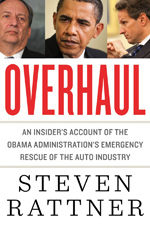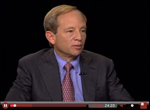As expected, the Federal Reserve left interest rates unchanged at its meeting last Wednesday. That’s because of a mix of good news and bad news. The good news is that the economy has been growing more briskly than most analysts expected (though April’s jobs report came in slightly softer than expected). The bad news is that the stronger growth has been accompanied by more persistent inflation than forecasted. That could present political challenges for President Joe Biden as election day approaches.

At the start of 2024, financial markets anticipated that the central bank would reduce interest rates by 1.5 percentage points over the ensuing year, down to 4%. That was substantially more optimistic than the Fed’s own projection of a year-end rate of 4.6%. But as the year has progressed, the market has flipped around and now anticipates only a slight reduction in rates, to 4.75%, with no change likely at the Fed’s next meeting, in June. That’s potentially disappointing news for the White House, which was expecting lower rates to provide an election tailwind.
Higher interest rates affect the pocketbooks of many Americans, particularly those seeking to buy a new home or who need to refinance an existing mortgage. Average mortgage rates peaked at 8.1% last October and then, as optimism about Fed rate cuts grew, fell to 7.1%. Now they are back to 7.4%. High mortgage rates are usually the enemy of house prices but so far, that has not happened. The combination of high house prices and high mortgage rates has severely compromised affordability for potential home buyers. As a result, home sales are down 35% from their peak and many younger Americans are completely priced out of the market.

The likelihood of interest rate cuts has diminished so much because inflation has proven to be more stubborn than expected. The Fed has made clear that it wants inflation to return to its pre-Covid target and level of roughly 2%. That appeared to be happening until early this year, when progress stalled with prices still rising by nearly 3% over the prior year and a key measure — the cost of services other than housing — increasing by 3.5%. The quarterly figures paint a clearer picture: Prices increased 1.1% in the first quarter of 2024, compared to just 0.1% in the last quarter of 2023. Service prices increased 1.4% quarter-over-quarter, up from 0.5% in the fourth quarter. That has been caused in large part by higher medical and auto insurance costs.
Those stubborn price rises are due in large part to equally stubborn labor cost increases. Everyone should want wages to go up. The challenge is when they go up too fast and feed into higher inflation. In the first quarter of this year, employment costs rose by 1.2% (a 4.5% annual rate), after having increased by only 0.9% in the fourth quarter of last year. (Pre-pandemic, labor costs were rising at about 2.7% per year.)
That has been coupled with continued strong overall economic growth. While the gross domestic product was reported as “only” growing at a 1.6% rate, that was because imports surged, in part due to the strong dollar. Overall consumer demand rose at a 3.1% rate (after adjusting for inflation), a larger rate of increase than would likely be consistent with declining inflation.
High wage growth combined with high spending growth poses a challenge for taming inflation.

The higher labor costs have been driven to a considerable extent by the robust job market.
Job growth has averaged 275,000 a month over the first quarter, though April’s report came in below expectations, at 175,000 jobs added. While that is slower than recent months, it remains in-line with pre-pandemic growth rates. Meanwhile, the unemployment rate has remained below 4% for 27 consecutive months, the longest such stretch since the late 1960s, to 3.9% at present.


